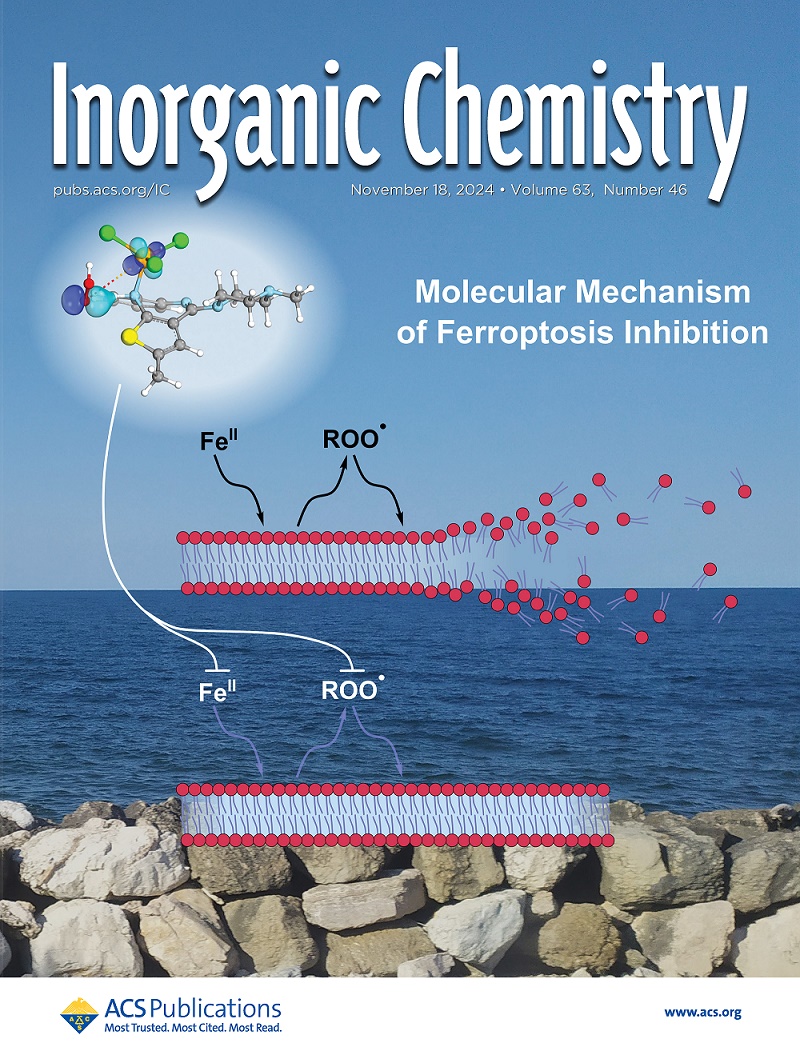Catalytic Benefits of an Ethynylphenyl-Based PdII Bis(NHC) over a Phenyl-Based PdII Bis(NHC): Insights into the Structural Aspects and Donor Strength Probing
IF 4.7
2区 化学
Q1 CHEMISTRY, INORGANIC & NUCLEAR
引用次数: 0
Abstract
The amount of cooperation between the metal centers by tailored ligand design is vital to achieve the multimetallic catalytic benefits. Herein, a bimetallic PdII NHC/pyridine complex is synthesized utilizing a novel extended C2-symmetric bis-NHC ligand featuring 1,4-disubstituted ethynylbenzene as a central ligand platform. The complex was further employed for the preparation of a dinuclear complex possessing a combination of NHC and PPh3 ligands. Dinuclear complexes have also been synthesized using a 1,4-di(NHC)-substituted parent benzene ring platform with no acetylene linker units. The donor strengths of both bis-NHC ligands were compared with the help of 13C and 31P chemical shift values as probes. All of the bimetallic complexes were tested as precatalysts in the intermolecular α-arylation of 1-methyl-2-oxindole and Sonogashira coupling reactions. The dinuclear PdII complexes with the ethynylbenzene-bridged bis-NHC ligand showed impressive catalytic outcomes that outweigh the catalytic outcomes obtained with dinuclear bis-NHC complexes possessing no such acetylene linkers. The corresponding mononuclear PdII complexes were synthesized for comparison purposes utilizing both types of central ligand platforms. The dinuclear complexes appeared more active than the corresponding mononuclear complexes in catalysis. Furthermore, higher cooperative index values were obtained in catalysis using the dinuclear PdII complexes with an acetylene-bridged bis-NHC ligand compared to those with no such acetylene linkers.

乙炔基苯基 PdII 双(NHC)相对于苯基 PdII 双(NHC)的催化优势:结构方面的见解和供体强度探测
通过量身定制的配体设计,金属中心之间的合作量对于实现多金属催化效益至关重要。本文以 1,4-二取代乙炔苯为中心配体平台,利用新型扩展 C2 对称双 NHC 配体合成了双金属 PdII NHC/吡啶配合物。该配合物还被进一步用于制备具有 NHC 和 PPh3 配体组合的双核配合物。此外,还利用 1,4-二(NHC)取代的母苯环平台合成了不含乙炔连接单元的双核配合物。以 13C 和 31P 化学位移值为探针,比较了两种双 NHC 配体的供体强度。在 1-甲基-2-吲哚的分子间 α-芳香化反应和 Sonogashira 偶联反应中,对所有双金属配合物作为前催化剂进行了测试。具有乙炔苯桥接双 NHC 配体的双核 PdII 复合物显示出令人印象深刻的催化效果,其催化效果超过了不具有此类乙炔连接体的双核双 NHC 复合物。为了进行比较,我们利用这两种中心配体平台合成了相应的单核 PdII 配合物。与相应的单核配合物相比,双核配合物的催化活性更高。此外,与不含乙炔连接体的双核 PdII 配合物相比,含有乙炔桥接双 NHC 配体的双核 PdII 配合物在催化过程中获得了更高的合作指数值。
本文章由计算机程序翻译,如有差异,请以英文原文为准。
求助全文
约1分钟内获得全文
求助全文
来源期刊

Inorganic Chemistry
化学-无机化学与核化学
CiteScore
7.60
自引率
13.00%
发文量
1960
审稿时长
1.9 months
期刊介绍:
Inorganic Chemistry publishes fundamental studies in all phases of inorganic chemistry. Coverage includes experimental and theoretical reports on quantitative studies of structure and thermodynamics, kinetics, mechanisms of inorganic reactions, bioinorganic chemistry, and relevant aspects of organometallic chemistry, solid-state phenomena, and chemical bonding theory. Emphasis is placed on the synthesis, structure, thermodynamics, reactivity, spectroscopy, and bonding properties of significant new and known compounds.
 求助内容:
求助内容: 应助结果提醒方式:
应助结果提醒方式:


